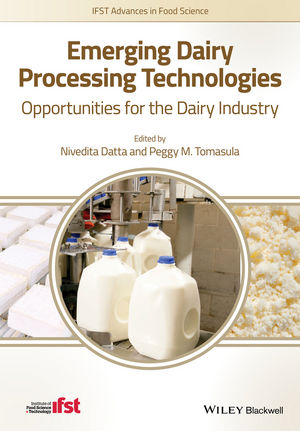Lab Talk: Coffee & Dairy

Perhaps many of you remember the “Seinfeld” episode of the black and white cookie, when Jerry explains that the key to consuming one is to get some black and some white in each bite. That cookie is symbolic of yin-yang, the ancient Chinese understanding of how things work.
The outer circle of the yin-yang symbol represents everything, while the black and white shapes within the circle represent the interaction of two energies, called yin (black) and yang (white), which cause everything to happen. They are not completely black or white, just as things in life are not completely black or white, and they cannot exist without each other.
While coffee and milk can exist without each other, when they come together, their consumer appeal grows stronger. Caffeine provides a kick while milk delivers nutrition. They both add value to each other.
“In today’s uncertain climate, consumers seek value,” says Michael Bellas, chairman and chief executive officer, Beverage Marketing Corp. (BMC), New York. “Responsive beverage companies are looking for ways to give it to them.”
According to BMC volume sales data, some smaller beverage categories, especially those emphasizing functional benefits, saw solid growth in 2008. The ready-to-drink (RTD) coffee segment, though not even a full percent of the U.S. liquid refreshment beverage market, experienced positive growth, unlike the total market, which experienced the first decline on record. This data suggests there’s a lot of room for growth and innovation in the RTD coffee category, which almost always includes milk for that yin-yang balance.
Formulators are experimenting with all types of coffee and milk combinations - from beverages to frozen desserts - coffee and milk complement each other. There are numerous coffee ingredients from which to choose. In general, the least expensive coffee flavoring ingredient is freeze-dried or powdered coffee. It can be stored at ambient temperature; thus, it has a lengthy shelflife. Unfortunately, such products often deliver an acidic or bitter aftertaste, and a formulator needs to mask this, especially in cold beverages, with other flavors, thickeners or sweeteners. Concentrates are more commonly used in beverages and frozen products because they deliver a higher-quality coffee flavor. They are available in a wide range of qualities, as well as a variety of flavors and strengths. They are made by brewing coffee, followed by reducing the water in the resulting brew. Flavor houses also offer coffee flavorants, some based on real coffee. Such coffee flavors can be used alone or to further enhance the aforementioned coffee ingredients.
Recent introductions
Cold Stone Creamery, Scottsdale, Ariz., is adding a jolt to its menu of treats with a new line of iced and blended coffees made with its proprietary ice cream mixes. The drinks also are available in light versions, which are made with skim milk and have a third less calories.“We knew we wanted to offer coffee to our guests, yet we wanted to do it in our own unique way using some of the same secret ingredients that make our ice cream irresistible,” says Ray Karam, who oversees product development for Cold Stone.
The Coca-Cola Co., Atlanta, and Illycaffè SpA, Italy, are bringing their premium RTD canned coffee drinks to the States. The line includes Cappuccino, an espresso blended with milk and dark cacao and Latte Macchiato, a smooth espresso with milk.
The original RTD coffee-milk marketer in the States - Starbucks Coffee Co., Seattle - has partnered with Unilever, Englewood Cliffs, N.J., to offer a new superpremium ice cream line inspired by some of consumers’ favorite Starbucks beverages. Created by culinary experts and food developers from both companies, Starbucks ice cream is made with high-quality, all-natural ingredients, including milk and cream supplied by farmers who pledge not to treat their cows with growth hormones.
Does your yang need a little yin?
Links
Looking for a reprint of this article?
From high-res PDFs to custom plaques, order your copy today!



